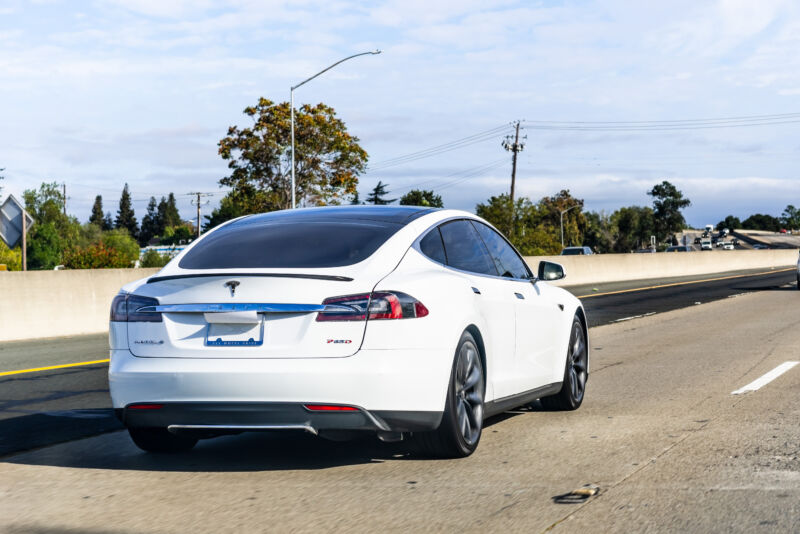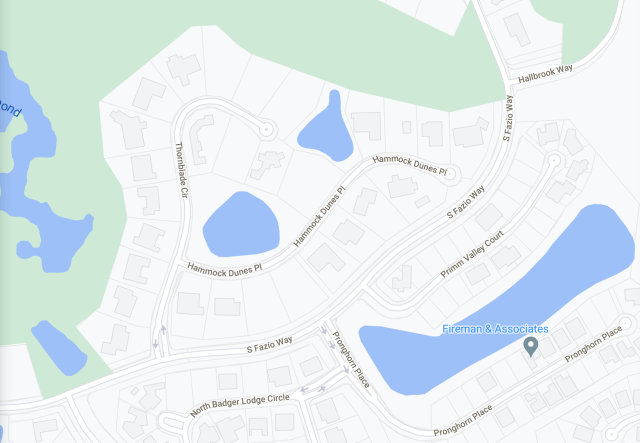Auto safety —
Car was reportedly traveling at a “high rate of speed” in a residential area.
Timothy B. Lee
–

Sundry Photography / Getty
A 2019 Tesla Model S has crashed in a fiery blaze in The Woodlands, an area north of Houston. The crash, which happened on Saturday around 11:25 pm local time, killed two people inside.
“Our preliminary investigation is determining—but it’s not complete yet—that there was no one at the wheel of that vehicle,” said Harris County Constable Mark Herman in an interview with The Wall Street Journal. “We’re almost 99.9 percent sure.”
Police found one of the passengers in the front right passenger seat, while the other was sitting in the back.
Herman told The New York Times that (as the Times put it) “minutes before the crash, the men’s wives watched them leave in the Tesla after they said they wanted to go for a drive and were talking about the vehicle’s Autopilot feature.”
I’ve emailed Tesla for more information about the crash, including whether Autopilot was engaged at the time of impact. However, Tesla has reportedly shut down its PR department, so I don’t expect a response.
“The fire raged for four full hours”

According to local media, the crash occurred on Hammock Dunes Place, a street that is only 0.3 miles long and ends in a cul-de-sac. It’s a wealthy area where many homes are more than 5,000 square feet and sell for more than $1 million.
The Tesla “was traveling from a cul-de-sac on Hammock Dunes Place and did not negotiate a curve,” authorities told to ABC 13. “The vehicle crashed into a tree before bursting into flames.”
“The fire raged for four full hours and required rescue workers to use about 30,000 gallons of water to eventually put the fire out because the battery kept reigniting,” Herman said, adding that the Tesla was “traveling at a high rate of speed.”
It should be noted that both gasoline-powered and battery-powered vehicles have a tendency to catch fire after a high-speed crash. But lithium-ion batteries are more likely to spontaneously reignite hours after an initial crash.
Both federal agencies responsible for auto safety—the National Transportation Safety Board and the National Highway Traffic Safety Administration—have dispatched investigators to the scene of the crash, according to the Associated Press.
Human supervision required
In the past, Tesla has claimed that Autopilot is only designed for use on divided highways—not residential streets. But last October, Tesla began allowing some Tesla customers to beta test its “full self-driving” software, which (as the name implies) is designed to work on a wide variety of roads. However, the software isn’t designed for fully autonomous operation—Tesla has said that drivers still need to actively monitor the software.
It’s not clear if the Tesla that crashed on Saturday was equipped with the Full Self Driving software or whether either that software or regular Autopilot was active at the time of the crash. If it turns out that Autopilot was engaged at the time of the crash, these wouldn’t be the first Autopilot-related deaths. Previously, at least three deadly Tesla crashes have occurred in the US while Autopilot was engaged: two in which Autopilot steered into the side of an 18 wheeler turning in front of the vehicle, and a third in which Autopilot veered into a concrete lane divider on a California freeway.
A key question in all three cases is why the driver didn’t intervene to prevent the collision. All of the situations were ones that a human driver should have been able to handle without much trouble. But while the drivers may not have been paying attention in the crucial final seconds, all three were at least sitting in the driver’s seat.
If the Tesla’s driver did activate Autopilot or Full Self Driving software and then jump into the passenger seat, that would be a blatant violation of Tesla’s instructions to customers. Still, it would increase pressure on Tesla to take more aggressive measures to prevent misuse of the technology, such as using eye-tracking cameras to ensure a driver is actually paying attention to the road. At least one of Tesla’s competitors, GM’s Cadillac division, has taken this approach for the Super Cruise driver-assistance system.
For years, the NTSB has been calling on Tesla to beef up its driver-monitoring system. But as an investigative agency, the NTSB doesn’t have the power to require automakers to change how their vehicles are designed. The agency that does have that power—NHTSA—has yet to require the use of driver-monitoring systems or set rules for how they work.

